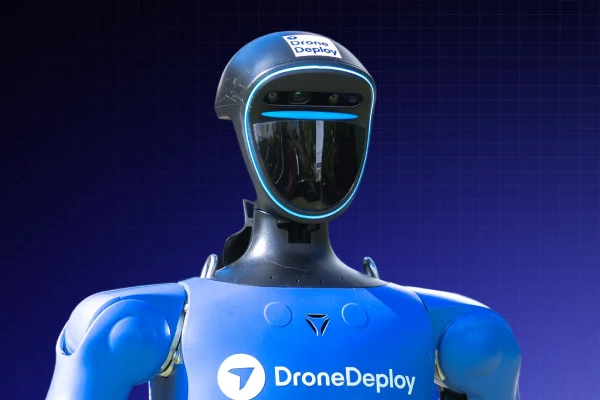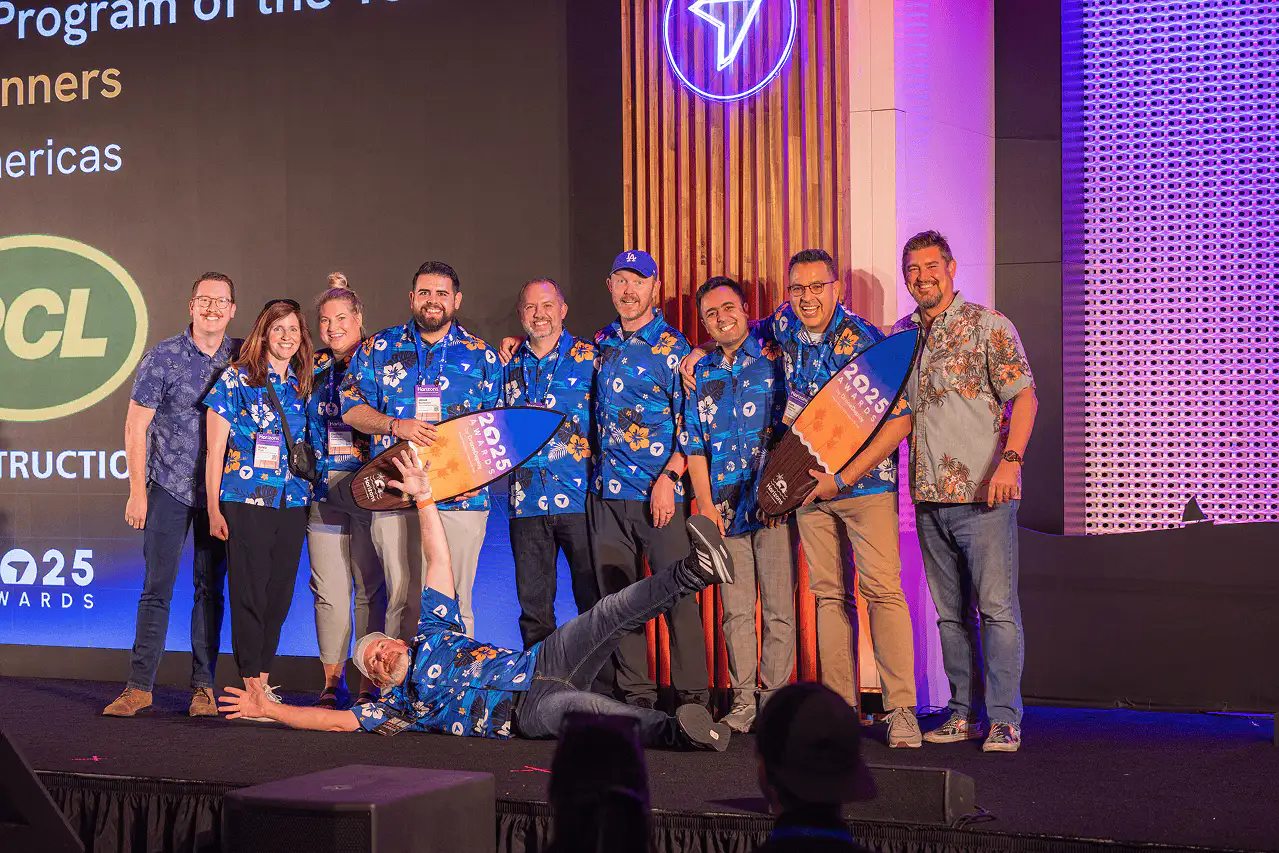All about accuracy: a crawl, walk and run approach to creating accurate drone maps

Quick Summary
- Accurate drone measurements are essential for eliminating rework, improving safety, and making reliable decisions — whether you’re doing earthworks, inspections, or managing large assets.
- Relative accuracy helps with consistent on-map measurements, while absolute accuracy aligns data to real-world coordinates; tools like GCPs (post-processing correction) and RTK (in-flight precision) boost both.
- A “crawl, walk, run” approach — start with basic mapping, introduce GCPs/RTK as you grow, then refine and scale — helps teams build a dependable, high-accuracy drone program supported by platforms like DroneDeploy.
In an era where technology is rapidly reshaping our understanding of the world, drones have emerged as useful tools for not just capturing aerial perspectives, but gaining data-rich insights on everything from construction jobsites to refineries and solar farms. That being said, your aerial insights are only as good as the accuracy of your drone maps and measurements. Whether you’re pouring concrete on a new build project or managing your midstream facility assets, accurate measurements can mean the difference between a successful project and being bogged down by expensive rework.
In this blog, we’ll take a look into the nuances of drone accuracy, unpacking terms like GCP (Ground Control Points) and RTK (Real Time Kinematics), and giving you a crawl, walk, run approach to getting accurate measurements. By grasping the essence of aerial accuracy, you can better harness the power of drones, and find actionable insights from your captures that help you catch mistakes early, eliminate rework and gain deeper visibility of your entire project site. Let’s get into it.

Why accuracy matters
Accuracy isn't merely an added bonus; it is the core of consistent and reliable aerial captures. With accurate drone measurements you can create a digital twin of your project, allowing you to perform inspections, coordinate with your field teams and generate detailed reports all without leaving your office:
- Better decision making: Better accuracy translates to more dependable insights. By having accurate aerial measurements you can create a true digital representation of whatever you’re trying to capture. For example, if you’re performing earthworks, having an accurate stockpile measurement can help you create consistent labor and cost estimates for planning. Having a virtual model of your site or asset can also enable effective cross-team collaboration as they’ll have access to the same accurate data from the subject of your capture.
- Work faster, work safer: Elevate operational efficiency by minimizing manual measurements. With accurate aerial measurements, walking a site and measuring in-person can be a thing of the past. For instance, measuring a facade of a building for repairs can take a lot of time and money – it also puts your team at risk by putting them up in swing stages. Thanks to accurate drone measurements, you can do the same job in hours versus weeks and keep boots on the ground.
- Cost savings: High accuracy ensures early identification of any mistakes or issues. Oftentimes, catching a mistake early can mean the difference between a successful project and months of rework. With accurate aerial drone measurements you can inspect your site in greater detail, significantly reducing your chances for expensive rework.
Relative vs. absolute accuracy
In the world of aerial mapping, there are two types of accuracy that play pivotal roles in the quality of your captures: relative accuracy and absolute accuracy.
Relative accuracy focuses on the consistency of a map based on how specific points on the map relate to each other. For instance, if the dimensions and relationships of objects in your model closely mirror reality, you've achieved high relative accuracy. Relative accuracy is essential for tasks like single-date annotation measurements, creating PDF overlays for quality control and performing visual inspections.
On the other hand, absolute accuracy gauges the alignment of a map with real-world geographical coordinates. If your map's geographic points align precisely with actual locations on the Earth, you've mastered absolute accuracy. This kind of accuracy is vital for projects like earthworks cut fill analysis, data alignment and civil design tasks. When aligning aerial data with real-world coordinates or comparing map datasets, absolute accuracy is the cornerstone of trustworthiness.
GCPs vs RTK
Ground Control Points, or GCPs, and Real Time Kinematics, RTK, are both vital tools for enhancing the accuracy of your aerial maps, but they function differently.
GCPs are physical markers placed on the ground at known positions. When drones capture images of a site, these markers can be identified and used to improve the accuracy of the resulting map. In essence, GCPs provide a reference system, ensuring the map aligns correctly with the real world.
RTK, on the other hand, is a satellite navigation technique. Drones equipped with RTK can receive data from satellites in real-time, which helps them determine their precise position mid-flight. This means the drone can capture images with a high level of positional accuracy right from the start.
To put it simply, while GCPs help correct and enhance the accuracy of a map after a flight, RTK ensures the drone captures highly accurate data during the flight.

A crawl, walk and run approach to drone accuracy
Getting accurate drone measurements and then being able to rely on those measurements can be both thrilling and daunting. But like mastering any new skill, taking it step-by-step can help you go from a single project use-case to a company-wide scale-up. By methodically tracking the value each step brings, you can better demonstrate the tangible benefits to your team, and in the long-run improve the success of your reality capture program.
Crawl: start simply, simply start
In the beginning, the best thing you can do for yourself is to simply get started. Immerse yourself in how aerial mapping works and the strategies and methods you can use to get the best results possible. The primary goal at this stage is to familiarize yourself with the platform and drone flight mechanics. When mapping in this early stage, shoot for relative accuracy (GCPs and RTK will come soon enough). Education is crucial at this stage, and fortunately, there are plenty of resources you can use to get up to speed. One great resource is our latest whitepaper testing the accuracy of the Mavic 3E RTK. In this piece we go into extreme detail on the different mapping methods and how to get the best results possible. By understanding these basics, you can set a solid foundation for more advanced applications in the future.
Walk: find new value opportunities
Now's the time to put your knowledge into action, and yes that means getting hands-on with GCPs and RTK. Once comfortable with basic drone flight and data capture, your next step should be to explore how high-accuracy measurement can benefit your teams and workflows. Seek out opportunities where high-accuracy aerial measurement can make a significant difference. For instance, do you need sub-inch level accuracy from a RTK module, or would certain aspects of your workflow get by with GCP built maps. More importantly, be prepared to answer any questions your teams might have. Being fully familiar with how these tools can benefit your business is crucial if you hope to scale up operations.
Run: Fine-tune and scale up
With a firm grasp on drone operations and the value they bring, it's time to fine-tune the workflow. This stage focuses on generating the best results with the least amount of effort and time replacing old workflows and fine tuning the new ones. While some errors might arise, they provide a baseline and understanding of where improvements can be made. Be close to your project teams and check-in with them to make sure they’re getting the results they’re after – if not, find areas for improvement and capitalize. Once you've honed in on your process, consider bringing more team members and projects into the fold effectively scaling up the operation, transforming aerial mapping into a standard practice at your company.
High-accuracy mapping with DroneDeploy
Accuracy is not just a metric; it's the backbone of efficient drone mapping. Ensuring high relative and absolute accuracy, understanding tools like GCPs and RTK, and adopting a phased approach to improving aerial measurements can unlock the potential of your reality capture program to help you work smarter, faster and safer.
Platforms like DroneDeploy can help you capitalize on the increased accuracy of your measurements, by offering tools and features that make the process of obtaining and analyzing accurate data seamless.
To learn more about improving the accuracy of your aerial measurements, check out the recording of our recent Reality Capture LIVE session where we took a deep dive on the subject.
FAQ
Related articles
Ready to manage your data from the very start?
Book a quick call to see how DroneDeploy streamlines capture from construction through building ROI.
.svg)
.png)


